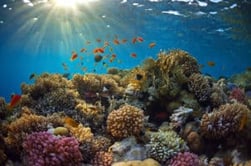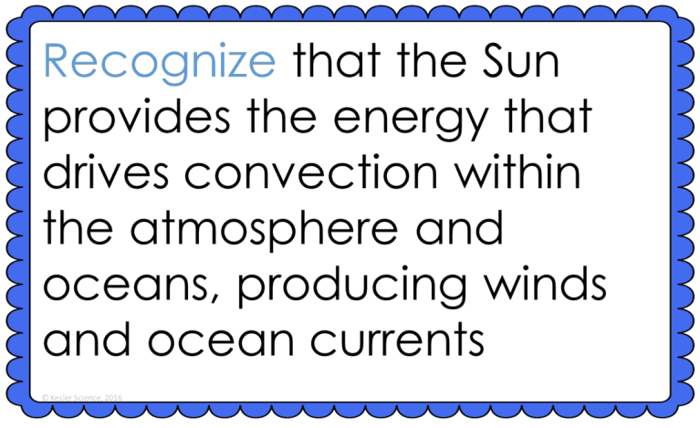
The teacher will help to clear any misconceptions about convection currents. A major misconception is that students think that all shoreline have sea breezes, and all currents are caused by convection.
Estimated Class Time for the Engagement: 20-30 minutes
EXPLORATION
This student-centered station lab is set up so students can begin to explore convection currents. Four of the stations are considered input stations where students are learning new information about convection currents and four of the stations are output stations where students will be demonstrating their mastery of the input stations. Each of the stations is differentiated to challenge students using a different learning style. You can read more about how I set up the station labs here.
EXPLORE IT!
Students will be working in pairs to better understand convection currents. In this station, students will be observing and making observations of the similarities and differences of convection currents. Students will follow the steps and record their observations on their lab sheet.
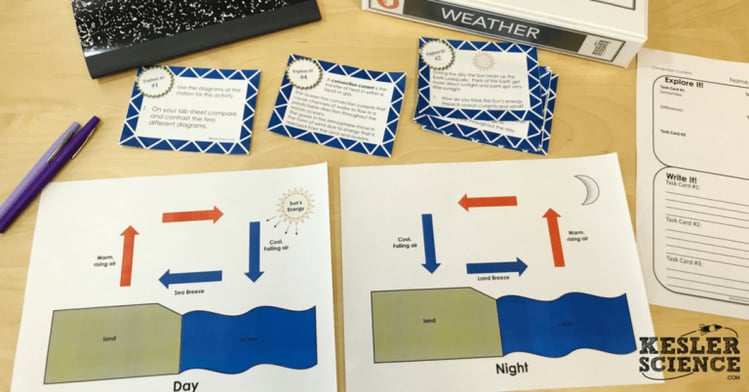
WATCH IT!
At this station, students will be watching a short video explaining convection currents. Students will then answer questions related to the video and record their answers on their lab station sheet. For example: What is the driving force of oceanic and atmospheric circulation? How does energy (heat) flow in the ocean? Describe the impact of Earth if the oceans were removed.
RESEARCH IT!
The research station will allow students to explore an interactive webpage that has students take a scientific approach to understanding convection currents. Students will be instructed to complete a few tasks and record answers on their lab sheets.
READ IT!
This station will provide students with a one page reading about convection currents. There are 4 follow-up questions that the students will answer to show reading comprehension of the subject.
ASSESS IT!
The assess it station is where students will go to prove mastery over the concepts they learned in the lab. The questions are set up in a standardized format with multiple choice answers. Some questions include: What is the driving force of ocean currents and atmospheric movement? Which is true about atmospheric convection currents? If the Sun were twice the size, how would this impact Earth's convection currents? How does heat flow in air and ocean currents?
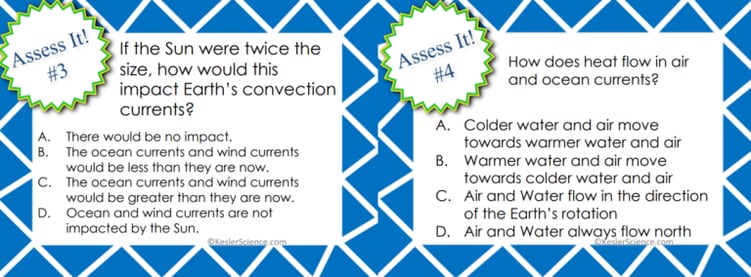
WRITE IT!
Students who can answer open-ended questions about the lab truly understand the concepts that are being taught. At this station, the students will be answering three task cards: One hot afternoon you are standing on a beach and notice the wind blowing in your face as you look out to the ocean. Why is this happening? Explain how the Sun drives convection currents in the ocean and in the atmosphere. How would unusually warm waters in the Gulf of Mexico impact the ocean currents and atmosphere?
ILLUSTRATE IT!
Your visual students will love this station. Students are to look at a map of the oceans and draw in the ocean currents. Red for warm and blue for cool.
ORGANIZE IT!
Students at this station will match the sets of cards. Students will read scenarios and will decide whether they are describing facts and fiction of moving ocean currents. Once students have completed their organization, the teacher will check their understanding.
Estimated Class Time for the Exploration: 1-2, 45 minute class periods
EXPLANATION
The explanation activities will become much more engaging for the class once they have completed the exploration station lab. During the explanation piece, the teacher will be clearing up any misconceptions about convection currents with an interactive PowerPoint, anchor charts, and notes. The convection currents lesson includes a PowerPoint with activities scattered throughout to keep the students engaged.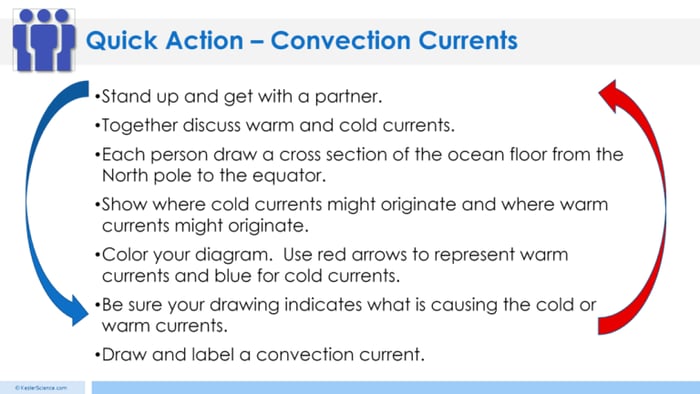
The students will also be interacting with their journals while taking notes from the PowerPoint. If you have students that need modified notes, the 5E lessons come equipped to help give every student access to the lesson.
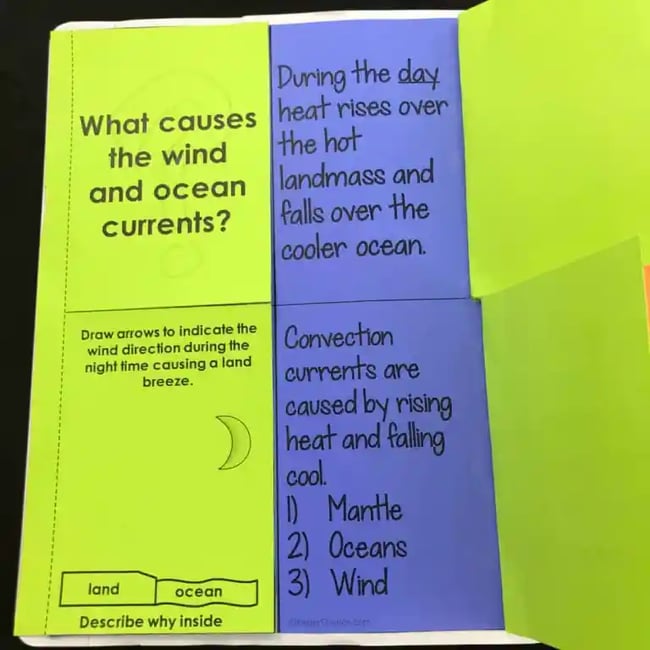
Estimated Class Time for the Exploration: 2-3, 45 minute class periods
ELABORATION
The elaboration section of the 5E method of instruction is intended to give students choice on how they can prove mastery of the concept. When students are given choice the ‘buy-in’ is much greater than when the teacher tells them the project they will have to create. The elaboration project will allow students to create a Prezi, PowerPoint, photo shoots, video, or even conduct an in-class demonstration.Estimated Class Time for the Elaboration: 2-3, 45 minute class periods (can also be used as an at-home project)
EVALUATION
The final piece of the 5E model is to evaluate student comprehension. Included in every 5E lesson is a homework assignment, assessment, and modified assessment. Research has shown that homework needs to be meaningful and applicable to real-world activities in order to be effective. When possible, I like to give open-ended assessments to truly gauge the student’s comprehension.
Estimated Class Time for the Elaboration: 1, 45 minute class period
DOWNLOAD THE FULL LESSON NOW
The full lesson is available for download from the Kesler Science Store. Save yourself a ton of time and grab it now.


